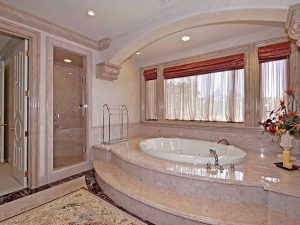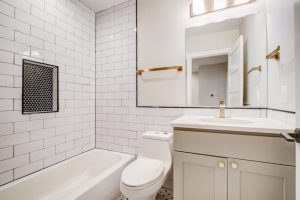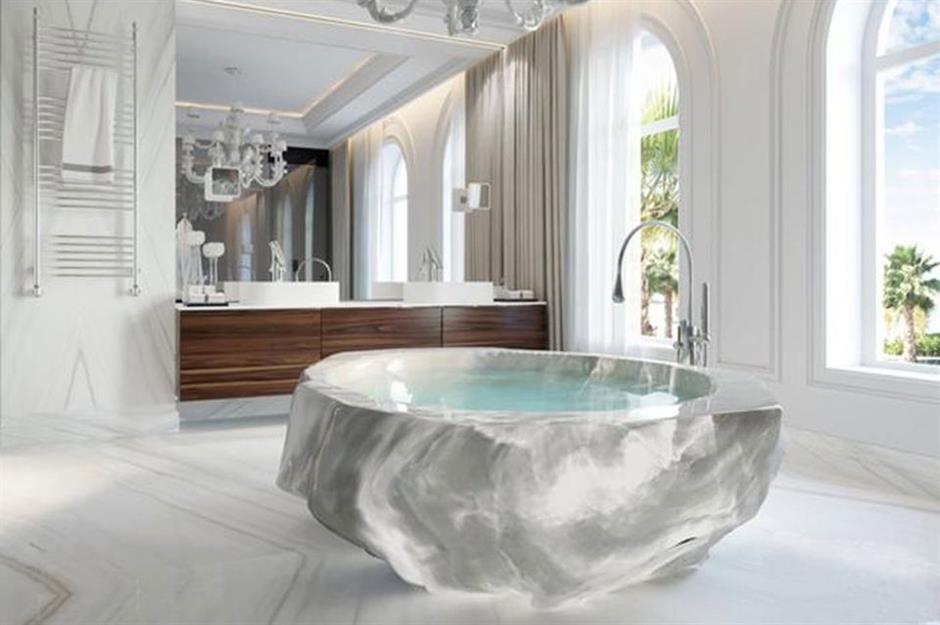The Intricacies of Bathroom Design and Cost
The Fundamental Components
Designing a bathroom is a delicate balance between functionality and aesthetics. From the sleek tiles to the stylish faucets, every element plays a role in creating a space that is both practical and visually appealing. However, when it comes to cost, one particular aspect tends to stand out as the most expensive part of a bathroom.

The Pinnacle of Luxury: High-End Bathtubs
While each component contributes to the overall expense, high-end bathtubs often take the spotlight as the most luxurious and costly part of a bathroom. These extravagant fixtures come in various shapes, sizes, and materials, catering to the diverse tastes of homeowners. Let’s delve into the intricacies of why these tubs can significantly impact the budget.
Materials Matter: The Luxury of Freestanding Tubs
Freestanding bathtubs are the epitome of opulence in bathroom design. Crafted from materials such as cast iron, acrylic, or even stone, these tubs not only provide a luxurious bathing experience but also become a focal point of the entire space. The choice of material greatly influences the cost, with high-quality, durable materials commanding a premium price.
Cast Iron Elegance: A Timeless Investment
Cast iron bathtubs are known for their durability and classic aesthetic. These tubs, with their enamel coating, not only resist scratches and stains but also retain heat, ensuring a warm and comfortable bath. The manufacturing process and the quality of materials contribute to the high price tag, making cast iron bathtubs a timeless investment for those seeking both functionality and luxury.
Acrylic Versatility: Modern Design with a Softer Price
For a more modern and budget-friendly option, acrylic bathtubs have gained popularity. While they may not have the same heft and solidity as cast iron, acrylic tubs are lightweight, making them easier to install. The versatility of acrylic allows for a wide range of shapes and designs, catering to contemporary tastes without sacrificing quality. The lower production costs often translate into a more accessible price point for homeowners.
Size and Style: Customization Comes at a Cost
The size and style of a bathtub play a crucial role in determining its cost. Larger tubs with intricate designs or customized shapes often come with a higher price tag. A deep soaking tub or a Jacuzzi-style bathtub, designed for a spa-like experience, can significantly contribute to the overall expense of the bathroom.

Bespoke Luxury: Customized Tubs for a Personal Touch
For those seeking the epitome of luxury, custom-designed bathtubs are the pinnacle. These unique creations are tailored to the homeowner’s specifications, incorporating specific materials, shapes, and features. The craftsmanship involved in producing a one-of-a-kind bathtub, along with the time and effort invested in the design process, makes custom tubs the most expensive option in the world of bathroom fixtures.
Installation Challenges: Professional Expertise Adds to the Cost
Beyond the cost of the bathtub itself, the installation process can significantly impact the overall expenses. Freestanding tubs, in particular, require careful positioning and secure plumbing connections. The complexity of the installation, coupled with the need for professional expertise, can add to the overall cost of integrating a high-end bathtub into a bathroom design.
Plumbing Precision: Ensuring a Seamless Installation
Installing a freestanding bathtub involves precise plumbing work to ensure proper water supply and drainage. This intricate process requires skilled professionals who understand the nuances of working with different materials and configurations. The cost of labor, coupled with any necessary adjustments to the existing plumbing system, adds another layer to the overall expense.
Floor Reinforcement: Supporting the Weight of Luxury
The weight of cast iron or stone freestanding tubs can be substantial, necessitating floor reinforcement to bear the load securely. This additional step in the installation process involves assessing the structural integrity of the floor and making any necessary enhancements to support the bathtub’s weight. The materials and labor involved in this reinforcement contribute to the overall cost of the project.
The Verdict: Balancing Luxury and Budget
In the realm of bathroom design, high-end bathtubs undoubtedly claim the title of the most expensive component. The choice of material, size, style, and the intricacies of installation all play a role in determining the final cost. Whether it’s the timeless elegance of cast iron, the modern versatility of acrylic, or the bespoke luxury of a custom-designed tub, homeowners must carefully weigh their preferences against budget constraints.
Investing Wisely: Finding the Perfect Balance
While high-end bathtubs add a touch of luxury to any bathroom, it’s essential to approach the decision with a balance of taste and budget. Understanding the factors that contribute to the cost allows homeowners to make informed choices, ensuring that their bathroom becomes a harmonious blend of opulence and practicality. Ultimately, the most expensive part of a bathroom becomes not just a fixture but an investment in comfort, style, and the overall ambiance of the home.

